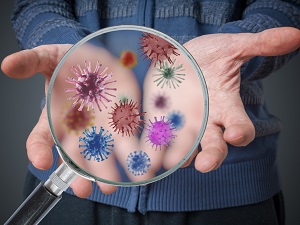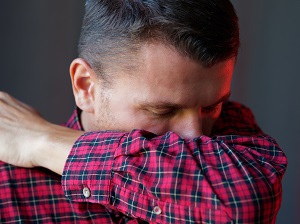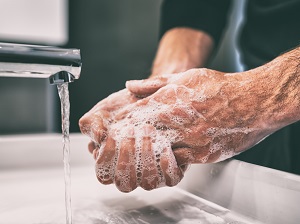Practicing effective general hygiene habits at work can help provide an atmosphere of cleanliness, orderliness, and safety while also preventing the spread of illness.

Keep your work area tidy, and clean up after yourself, including after using the restroom or any other common areas. Throw away garbage, wipe down surfaces, and pick up anything that fell on the floor or the ground.
Throw away trash at the end of your work shift that may have accumulated throughout the day, including food wrappers, used paper towels or tissues, beverage containers, etc. Wash reusable dishes daily, including mugs, insulated thermos containers and utensils.
Throw away any uneaten food, that is kept at work or in a work fridge, at the end of every week. Do not keep any food at work that is not in a sealed container.
Use garbage cans and do not litter. Trash bins should be emptied regularly and not allowed to overflow. Trash should never be spilling onto the floor.
Wipe down the microwave after using. Always place a paper towel, paper plate or other cover on the top of any food cooking in a microwave to prevent splatter.
If you notice ants, vermin, or droppings in any work or common area, notify management immediately.
Cover your mouth and nose with a tissue when you cough or sneeze or use the inside of your elbow. Throw used tissues into a lined or no-touch trash can. Wash your hands or use a hand sanitizer after coughing, sneezing, or blowing your nose. If wearing gloves or a face mask, always wash your hands after removing them.

Use deodorant or antiperspirant daily, especially if you tend to sweat during the course of the workday.
Cuts and burns must be covered at all times with appropriate first aid dressings. Make sure cuts, burns or lacerations are kept clean to prevent infection.
Do not wear PPE that is damaged, torn, worn out, or excessively dirty. Do not reuse single-use PPE like one-time use face masks or disposable gloves. Store PPE in a clean and dry area, until required for use, to prevent contamination.
Keep frequently touched common work surfaces clean. Germs, including viruses, can spread from other people or surfaces when you:
- Touch your eyes, nose, and mouth with unwashed hands
- Prepare or eat food and drinks with unwashed hands
- Touch a contaminated surface or objects
- Blow your nose, cough, or sneeze into hands and then touch other people’s hands or common objects
Handwashing is one of the best ways to protect yourself from getting sick. Wash your hands often with soap and water for at least 20 seconds. If soap and water are not readily available, use an alcohol-based hand sanitizer with at least 60% alcohol. If your hands are visibly dirty, washing with soap and water is better than using hand sanitizer. Avoid touching your eyes, nose and mouth with unwashed hands.

Follow these five steps every time you wash your hands.
- Wet your hands with clean, running water, turn off the tap, and apply soap.
- Lather your hands by rubbing them together with the soap. Lather the backs of your hands, between your fingers, and under your nails.
- Scrub your hands for at least 20 seconds.
- Rinse your hands well under clean, running water.
- Dry your hands using a clean towel or air dry them.
Washing hands can keep you healthy and prevent the spread of infections from one person to the next. Key times to wash or clean your hands include:
- Before and after work shifts and work breaks
- After blowing your nose, coughing, or sneezing
- After using the restroom
- Before and after eating or preparing food
- After putting on, touching, or removing face masks or gloves
- After touching garbage
- After touching an item or surface that may be frequently touched by other people
- Before touching your eyes, nose, or mouth

If soap and water are not readily available, you can use an alcohol-based hand sanitizer that contains at least 60% alcohol. You can tell if the sanitizer contains at least 60% alcohol by looking at the product label. Sanitizers can quickly reduce the number of germs on hands in many situations. However, Sanitizers do not get rid of all types of germs. Hand sanitizers may not be as effective when hands are visibly dirty or greasy. Hand sanitizers might not remove harmful chemicals from hands like pesticides and heavy metals.
Follow these steps every time you use hand sanitizer.
- Apply the gel product to the palm of one hand (read the label to learn the correct amount).
- Rub your hands together.
- Rub the gel over all the surfaces of your hands and fingers until your hands are dry. This should take around 20 seconds.

.jpeg)
.jpg)
